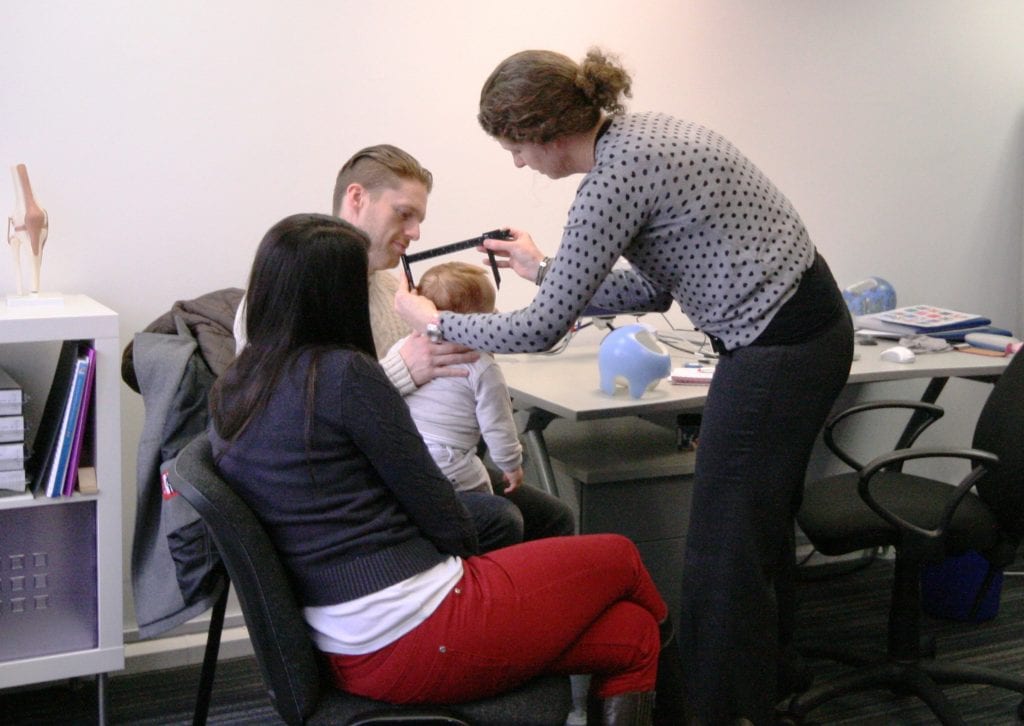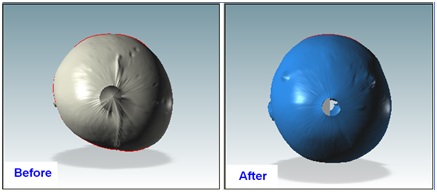
As your baby’s plagiocephaly treatment comes to an end though, many concerned parents worry that their baby’s head shape will ‘go back to the way it was’ and this will undo the results they see at the final assessment. At Technology in Motion, we always answer those concerns with one clear response, the shape of your baby’s head will not go back to how it was and plagiocephaly will not return.
Whilst wearing their plagiocephaly helmet, your baby’s skull structures continue to strengthen and this will form a much stronger head shape once the helmet is removed. As your baby’s face develops and their head continues to grow, the shape will continue to develop naturally following their plagiocephaly treatment.
Furthermore, as the end of their plagiocephaly treatment draws near, your baby is moving much more independently and can sit, crawl and roll over self-sufficiently. The increased mobility that your baby is now able to achieve means that far less pressure is being applied to one particular spot on your baby’s head.
For more information as to why plagiocephaly won’t return after treatment, our recent blog post goes into more detail as to why there is no evidence of regression after treatment. The post also includes scientific research that uses anthropometric measurements taken 18 and 24 months after treatment to prove that correction remained stable with no regression (1).
What happens at the final plagiocephaly assessment?
Our treatment process is completely unique and during your final assessment. We email the initial and final scans with instructions on how to use on the 3D viewer which can be reviewed later on at home. We use this software and manual measurement data as a reference tool to monitor your baby’s progress and help you understand the results your baby is achieving.

During your final plagiocephaly assessment, you are given a card congratulating you and your baby on successfully completing plagiocephaly treatment. You are then given the USB memory stick which has your baby’s original and final scans attached to it. Your clinical orthotist will explain and discuss this data with you so you can fully understand the data, as well as showing you how to use the software. This allows you to see just where your baby’s head has grown and improved.
The congratulations card also gives you written instructions on how to view the software at home and share your baby’s progress with family and friends. The USB memory stick is pre-loaded with your baby’s initial and end of treatment scan and you will need to click on the TiMbandViewer.exe application to open and view your baby’s results.
What happens after my baby has completed plagiocephaly treatment?
Once you and your baby reach the end of treatment, the only thing left to do is enjoy the results that your baby has achieved. If you are worried about your baby following treatment and want to book in a review appointment with your clinical orthotist, we are always happy to see you and review your baby’s progress with you. Occasionally, in very severe cases, we do offer a second helmet treatment for babies who are still young enough to benefit from further treatment with the potential for further correction.

If you have any questions regarding your baby’s plagiocephaly treatment, we’ll answer any questions you might have and, if you wish, book a no-obligation assessment at your nearest plagiocephaly clinic to see if your baby could benefit from a helmet.
(1) Littlefield TR, Beals SP, Manwaring KH, et al. Treatment of craniofacial asymmetry with dynamic orthotic cranioplasty. J Craniofac Surg 1998;9:11–19.


